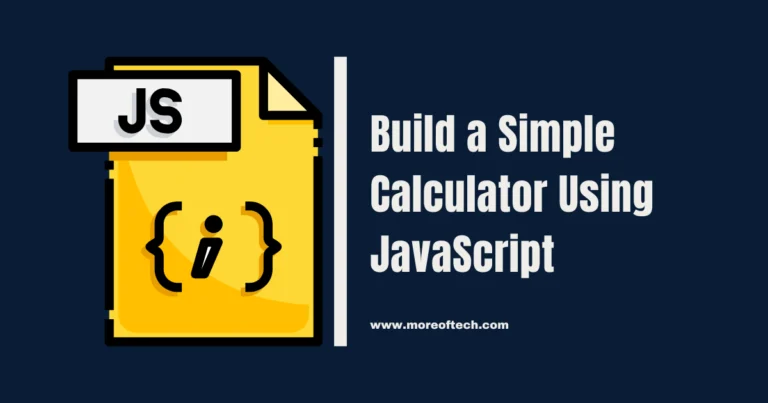Top 10 JavaScript Libraries Every Developer Should Know
JavaScript libraries are key in web development. They help create innovative and efficient digital solutions. With over 54% of web technologies using JavaScript, they change how we make interactive and responsive apps.
These libraries are more than just code collections. They are powerful frameworks that make complex tasks easier. For example, React makes UI components easier, while Node.js handles server-side tasks. They help developers make top-notch web experiences with less effort and better performance.
Libraries like React, Node.js, and Vue.js are widely used. They have millions of downloads and strong GitHub support. Knowing these libraries can make you more productive and add to your tech skills.
Whether you’re new or experienced, learning these libraries is crucial. They give you the skills to build advanced, scalable web apps that meet today’s tech needs.
Table of Contents
Understanding Modern JavaScript Development Landscape
JavaScript has changed a lot in the last ten years. It went from simple scripts to a big ecosystem that powers web development. Now, developers can make complex, fast apps with great ease.
The modern JavaScript world gives developers big chances to make web apps that grow and respond well. Frameworks like react and angular have changed how we develop software. They make projects go faster.
Ecosystem Evolution
JavaScript’s journey is amazing. It moved from simple scripts to complex frameworks. Important points include:
- Emergence of component-based architectures
- Advanced state management techniques
- Cross-platform development capabilities
- Enhanced performance optimization
Libraries and Development Productivity
Modern JavaScript libraries really help developers work faster. They can:
- Reduce development time by 2-3 times
- Make onboarding easier
- Create code that’s easier to keep up with
| Framework | Development Speed | Scalability |
|---|---|---|
| React | High | Excellent |
| Angular | Moderate | Superior |
Choosing the right framework is key to a project’s success. React and Angular have their own strengths for different needs.
Modern JavaScript development is about choosing the right tools for your specific project requirements.
Essential JavaScript Libraries for Frontend Development
Frontend development has changed a lot with powerful JavaScript libraries. Vue.js and jQuery are key tools for developers. They help make web apps more efficient and strong.
jQuery is a basic library that makes HTML easier to work with. It handles events and animations well. Even though new tech comes out, it’s still used a lot. Vue.js, on the other hand, is a modern framework. It’s great for making user interfaces that are flexible and work well.
“Modern frontend development is about choosing the right tools that balance performance and developer experience.” – Web Development Expert
What makes a frontend library essential? They should make DOM manipulation easy, handle events well, and have responsive UI components. They also need to work well across different browsers.
When picking a JavaScript library, think about what your project needs. Vue.js is small, about 58 kb, and fast. It’s good for developers who want speed and simplicity.
| Library | GitHub Stars | Weekly Downloads | Developer Interest |
|---|---|---|---|
| Vue.js | 208,000+ | 6.4M+ | 50.7% |
| jQuery | 55,000+ | 4.5M+ | 45.3% |
Knowing about these libraries helps you make better choices. It improves your web development work and makes user experiences better.
React: The Industry Standard UI Library
React has changed web development with its new way of making user interfaces. It’s the top JavaScript library, helping developers make web apps that are dynamic and fast.
React’s strength comes from its special design and how it’s made. It lets developers build apps that grow and stay easy to update on different platforms.
Virtual DOM Architecture
React’s Virtual DOM is a big step forward in making apps run smoother. It creates a light version of the real DOM, cutting down on how much work the browser does. This makes apps load faster and run better.
- Faster rendering cycles
- Efficient memory usage
- Smoother user experience
Component-Based Development
The way React works lets developers make parts of the app that can be used over and over. Each part, or component, has its own job and how it looks, making code easier to manage.
| Component Type | Key Characteristics |
|---|---|
| Functional Components | Lightweight, use hooks for state management |
| Class Components | Traditional approach with lifecycle methods |
React Ecosystem and Tools
The React world has lots of tools for making web apps today. Libraries and frameworks like Next.js, Vite, and TanStack Query help React do more, making it easier to build complex apps.
- Vite: Fastest project initialization tool
- Next.js: Server-side rendering solution
- TanStack Query: Advanced state management
Angular: Complete Framework for Enterprise Applications
Angular is a strong framework for making complex enterprise apps. It’s made and kept up by Google. This JavaScript framework gives developers tools to make web apps that grow and work well.
Choosing Angular for your app means you get big benefits:
- Built-in security against web threats
- Strong TypeScript support for better code
- Component-based design for easy updates
- Regular updates for long-term support
Teams working on big projects like Angular. It has features that make complex app building easier. Its system for managing code and data makes things simpler.
“Angular provides a complete ecosystem for building enterprise-grade web applications with unparalleled efficiency.” – Google Development Team
Angular is great for big projects because of its technical strengths:
| Feature | Enterprise Benefit |
|---|---|
| Lazy Loading | Reduces initial load times |
| TypeScript Support | Enhanced code quality and error prevention |
| RESTful HTTP Client | Simplified backend integration |
But, Angular has a steep learning curve. Smaller teams might find it hard. Yet, for big companies looking for a full framework, Angular is worth it.
The latest Angular 18 release brings more performance and better for developers. It keeps Angular as a leading choice for web apps in big companies.
Vue.js: Progressive JavaScript Framework
Vue.js is a strong and adaptable JavaScript framework that has caught the eye of web developers globally. It makes building dynamic user interfaces and single-page apps easier with its progressive method.
Today’s web development needs tools that are both strong and easy to use. Vue.js meets this need, giving developers a simple way to make complex web apps.
Reactivity System: Intelligent State Management
At Vue.js’ heart is its smart reactivity system. This feature helps make apps that respond well without extra work. It keeps track of data changes automatically, making updates and rendering more efficient.
- Automatic dependency tracking
- Optimized re-rendering
- Simplified state management
Template Syntax and Directives
Vue.js stands out with its clean template syntax. It uses powerful directives to make HTML more capable, making complex interactions easier.
“Vue.js makes web development feel like magic” – Vue.js Community
State Management Solutions
For big apps, Vue.js has Pinia for state management. This small library makes managing state safe and predictable, keeping apps running smoothly.
| Feature | Vue.js Advantage |
|---|---|
| Core Library Size | 33.9 KB (minified and gzipped) |
| Initial Release | February 2014 |
| Latest Version | 3.5.13 (November 15, 2024) |
Whether it’s a small project or a big enterprise app, Vue.js has the flexibility and power to make your idea real.
Node.js: Server-Side JavaScript Runtime

Node.js changed web development by letting JavaScript run on the server side. Ryan Dahl created it in 2009. It makes building web apps easier and faster.
It works with an event-driven system. This means you can use one language for both the client and server sides. This is a big deal for web app development.
Node.js is known for its amazing features:
- Handles over 10,000 concurrent connections efficiently
- Uses V8 JavaScript engine for rapid execution
- Supports multiple operating systems
- Provides non-blocking I/O operations
It’s great at handling many tasks at once. This makes servers work better and apps faster. You can also use npm to find millions of libraries to help you work faster.
“Node.js transforms JavaScript from a browser-only language to a full-stack development powerhouse.” – Web Development Experts
Node.js is perfect for many web projects. It’s great for real-time apps, APIs, microservices, and streaming platforms. It keeps getting better thanks to its strong community.
Data Visualization with D3.js
Data visualization is key for developers to turn complex info into clear insights. D3.js is a top JavaScript library for making stunning, interactive data visuals.
Working with d3.js lets you control data visualization like never before. It gives developers a strong toolset for making dynamic, engaging graphics. These go beyond simple charts.
SVG Manipulation Capabilities
D3.js excels in SVG manipulation. You can:
- Create complex shapes
- Make custom data-driven graphics
- Build intricate visual elements
- Render precise scalable vector graphics
Dynamic Data Binding
The library’s dynamic data binding lets visuals update smoothly. With d3.js, you can:
- Sync data changes automatically
- Update visuals in real-time
- Link complex datasets to graphics
| Feature | D3.js Capability |
|---|---|
| Weekly NPM Downloads | 1.9 Million |
| GitHub Stars | 103,000+ |
| Visualization Complexity | High Customization |
Interactive Visualizations
Interactive visuals are the best part of d3.js. You can make responsive and engaging graphics. These graphics change with user input, turning data into a story.
HTTP Client Libraries: Axios and Fetch
Choosing the right HTTP client library is key for web app development. Axios is a top choice for API requests, offering more than fetch can. It has features that make network communication smoother.

Axios gives developers a wide range of tools for HTTP requests. It’s different from the native fetch() API because it adds extra functionality. This makes handling network requests easier.
- Automatic JSON parsing
- Comprehensive error handling
- Request and response interceptors
- Built-in request cancellation
Now, let’s look at what makes Axios and fetch() different:
| Feature | Axios | Fetch() |
|---|---|---|
| Browser Support | Works in older browsers (IE11) | Best for modern browsers (Chrome 42+, Firefox 39+) |
| JSON Parsing | Does it automatically | Requires manual parsing |
| Error Handling | Covers a wide range of HTTP errors | Only handles some network errors |
For developers looking for a strong HTTP client, Axios is a great choice. Its architecture makes handling complex network interactions easier. This is thanks to its promise-based design.
When deciding between Axios and fetch(), think about your project’s needs. Check browser support and the features you want. Axios is known for its wide range of tools and ease of use in web development.
Utility Libraries: Lodash and Moment.js
JavaScript developers look for tools to make coding easier. Lodash and Moment.js are key libraries that boost development speed and make code easier to read.
Lodash has become a must-have for JavaScript developers since 2012. With over 30 million monthly downloads, it offers a wide range of tools for handling complex data.
Array and Object Manipulation
Lodash makes tough programming tasks easier with its powerful functions. It includes:
- Efficient array filtering and transformation
- Advanced object manipulation techniques
- Performance-optimized utility functions
Date and Time Handling
Moment.js changes how we handle dates and times in JavaScript apps. Introduced in 2011, it brings:
- Powerful date parsing capabilities
- Extensive internationalization support
- Seamless time zone conversions
“Utility libraries like Lodash and Moment.js can reduce development time by up to 20%.” – JavaScript Development Insights
Performance Optimization
Both Lodash and Moment.js aim for high performance. They help developers write code that is shorter, clearer, and more efficient.
Adding Lodash and Moment.js to your projects opens up advanced data and time management. This greatly enhances your JavaScript development workflow.
Conclusion
The world of JavaScript libraries is always changing. With 85.3% of developers using them, they play a big role in web development. Choosing the right libraries can make your project better in many ways.
Looking into these libraries gives us important lessons. Frameworks like React, Vue, and Angular have changed web app development. Tools like Vite and Playwright show the community’s drive for new ideas.
When picking JavaScript libraries, think about what your project needs. Look at community support, how well they perform, and if they’re easy to keep up with. There are many libraries, from simple tools to full frameworks, giving developers lots of options.
Learning never stops in this fast world of tech. Keeping up with new JavaScript libraries helps you lead in web development. The future is for those who are open to new tools and ideas.







